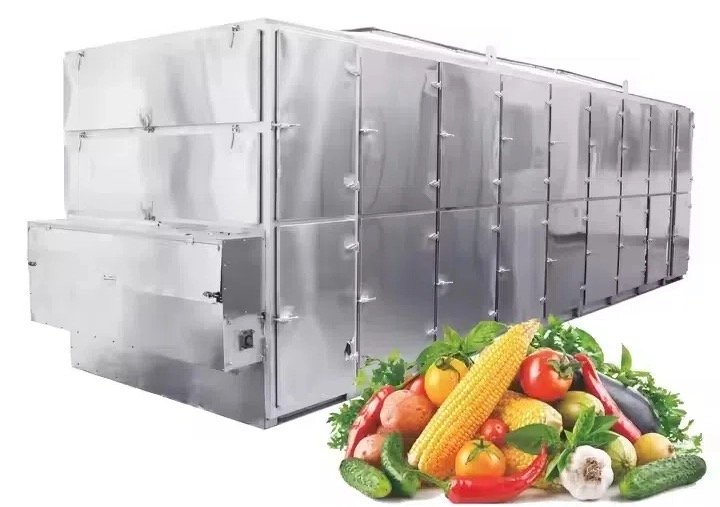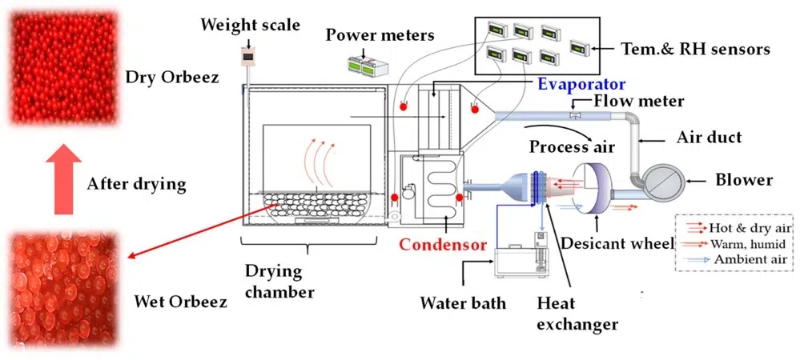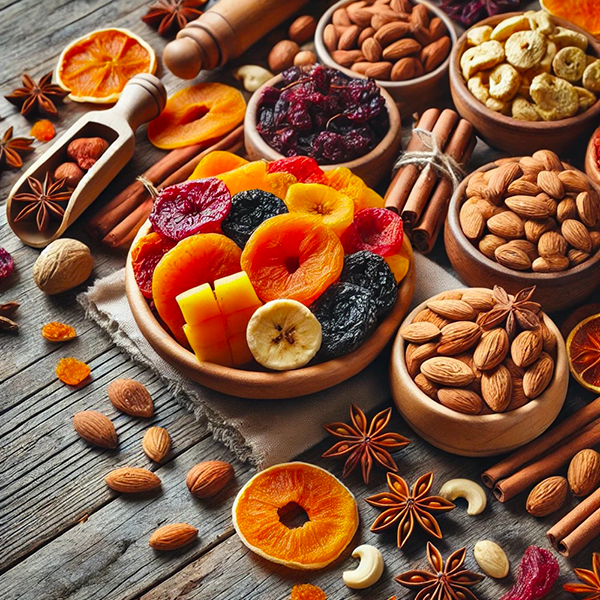
Content Menu
● Introduction to Penetration Type Dryers
>> Key Features of Penetration Type Dryers
● Benefits of Penetration Type Dryers
>> Cost Savings
>> Environmental Sustainability
>> Operational Efficiency and Maintenance
● Comparison with Other Drying Technologies
>> Multi-Layer Mesh Belt Dryers
>> Heat Pump Dryers
● Achieving Optimal Results with Penetration Type Dryers
● Future Developments and Trends
>> Integration of Smart Technologies
>> Renewable Energy Sources
● Case Studies
● Conclusion
● FAQs
>> 1. What types of food products are suitable for penetration type dryers?
>> 2. How energy-efficient are penetration type dryers compared to traditional dryers?
>> 3. Can penetration type dryers be customized for specific drying needs?
>> 4. How do penetration type dryers contribute to environmental sustainability?
>> 5. What are the typical capacities of penetration type dryer machines?
● Citations:
Penetration type dryers have become a crucial component in the food processing industry, offering unparalleled efficiency and cost-effectiveness. These machines are designed to handle a wide range of food products, from nuts and spices to seeds and beans, by utilizing a patented half vacuum air duct design that ensures even drying even when products are stacked. This article will delve into the key features and benefits of penetration type dryers, providing insights on how to achieve optimal results with these machines.

Introduction to Penetration Type Dryers
Penetration type dryers are renowned for their energy efficiency, using only 25% of the electricity required by traditional dryers. This significant reduction in energy consumption not only leads to substantial cost savings but also contributes to environmental sustainability by lowering carbon emissions.
Key Features of Penetration Type Dryers
1. Adjustable Temperature Control: These dryers offer adjustable temperature settings from 18°C to 80°C, allowing for precise control over the drying process. This flexibility is crucial for different types of food products, each requiring specific temperature conditions for optimal drying.
2. Dehumidification Function: The dehumidification function helps maintain a controlled humidity environment, essential for preventing moisture-related spoilage and ensuring consistent product quality.
3. Energy Efficiency: By consuming significantly less energy than traditional drying methods, penetration type dryers are highly cost-effective and environmentally friendly.
4. Versatility: These machines are versatile and can handle a wide range of food products. Their adjustable temperature and humidity control features ensure that different products can be dried under optimal conditions.
5. Ease of Maintenance: Penetration type dryers are designed with ease of maintenance in mind. The components are accessible, allowing for quick cleaning and replacement of parts when needed. This reduces downtime and ensures continuous operation.
Benefits of Penetration Type Dryers
Cost Savings
The energy efficiency of penetration type dryers leads to significant cost savings. By using only 25% of the electricity required by traditional methods, businesses can reduce their operational expenses and allocate resources more effectively.
Environmental Sustainability
The reduced energy consumption of these machines contributes to environmental sustainability. Lower energy usage means less carbon footprint, aligning with global efforts to reduce greenhouse gas emissions.
Operational Efficiency and Maintenance
Penetration type dryers are designed to minimize downtime. Their accessible components allow for quick maintenance, ensuring continuous operation and meeting production deadlines efficiently.

Comparison with Other Drying Technologies
Multi-Layer Mesh Belt Dryers
Multi-layer mesh belt dryers are continuous dryers that use heat and airflow to accelerate the drying process. They are ideal for processing large volumes of food products and provide better ventilation, which is beneficial for items that cannot withstand continuous high temperatures. These dryers are commonly used in the production of dried fruits and vegetables.
Heat Pump Dryers
Heat pump dryers utilize advanced heat pump systems to provide rapid and automated drying processes. They are suitable for a wide range of products, including seafood, fruits, and tobacco leaves. Heat pump dryers are known for their high efficiency and ability to maintain consistent drying conditions.
Achieving Optimal Results with Penetration Type Dryers
To achieve optimal results with penetration type dryers, it is crucial to follow a few key strategies:
1. Assessment and Planning: Conduct a thorough assessment of your current drying processes and identify areas for improvement. Work closely with the OEM provider to customize the penetration type dryers to meet your specific needs.
2. Installation and Training: Ensure that the dryers are installed within a short timeframe, and provide comprehensive training to your staff on operation and maintenance.
3. Monitoring and Optimization: Continuously monitor the performance of the dryers and make adjustments as needed to optimize their operation. This includes using automated controls to maintain consistent drying conditions.
4. Quality Control: Implement rigorous quality control measures to ensure that the dried products meet the required standards. This includes regular testing for moisture content and flavor preservation.
5. Maintenance Scheduling: Schedule regular maintenance to prevent unexpected downtime. Regular cleaning and inspection of components can help extend the lifespan of the dryers.
Future Developments and Trends
The food drying industry is continuously evolving, with advancements in technology leading to more efficient and sustainable drying solutions. Future developments are expected to focus on integrating smart technologies and renewable energy sources into drying systems. This will further enhance the efficiency and environmental friendliness of penetration type dryers.
Integration of Smart Technologies
Smart technologies, such as IoT sensors and AI algorithms, can be integrated into penetration type dryers to optimize their performance. These technologies can monitor drying conditions in real-time, automatically adjusting temperature and humidity levels to achieve optimal drying results.
Renewable Energy Sources
The use of renewable energy sources, such as solar or wind power, can further reduce the carbon footprint of penetration type dryers. This integration will not only enhance sustainability but also provide cost savings by reducing reliance on traditional energy sources.
Case Studies
1. Nut Processing Company: A leading nut processing company successfully implemented penetration type dryers to improve their drying efficiency. By switching from traditional drying methods, they achieved a 30% reduction in energy costs and increased their production capacity by 20%.
2. Spice Manufacturer: A spice manufacturer utilized penetration type dryers to dry a variety of spices, including cardamom and cloves. The adjustable temperature control allowed them to preserve the delicate flavors and aromas of the spices, resulting in higher quality products.
3. Pumpkin Seed Processor: A pumpkin seed processor used penetration type dryers to dry large quantities of pumpkin seeds efficiently. The even drying ensured that the seeds retained their nutritional value and flavor, making them more appealing to consumers.
4. Dried Fruit Producer: A dried fruit producer implemented penetration type dryers to enhance the quality of their dried fruits. The controlled humidity environment helped prevent moisture-related spoilage, resulting in longer shelf life and better customer satisfaction.
Conclusion
Penetration type dryers are a valuable asset in the food industry, offering efficient, cost-effective, and environmentally friendly drying solutions. Their patented design ensures even drying of stacked products, while their energy efficiency and adjustable temperature controls make them suitable for a variety of food items. By following the strategies outlined above and leveraging the benefits of penetration type dryers, businesses can enhance their operational efficiency and sustainability.

FAQs
1. What types of food products are suitable for penetration type dryers?
Penetration type dryers are ideal for drying nuts, spices, seeds, beans, and other similar products that can be stacked together. Their adjustable temperature and humidity control features ensure that different products can be dried under optimal conditions.
2. How energy-efficient are penetration type dryers compared to traditional dryers?
Penetration type dryers use only 25% of the electricity required by traditional dryers, making them highly energy-efficient and cost-effective.
3. Can penetration type dryers be customized for specific drying needs?
Yes, penetration type dryers can be customized to meet specific drying requirements. They offer adjustable temperature settings from 18°C to 80°C, along with dehumidification functions.
4. How do penetration type dryers contribute to environmental sustainability?
The reduced energy consumption of penetration type dryers contributes to environmental sustainability by minimizing energy usage and lowering carbon footprint.
5. What are the typical capacities of penetration type dryer machines?
Penetration type dryer machines can handle capacities ranging from 300 to 10 tons, making them suitable for both small-scale and large-scale food drying operations.
Citations:
[1] https://www.dryeratech.com/cost-effective-solutions-investing-in-a-penetration-type-dryer.html
[2] https://www.dryeratech.com/why-jimu-s-penetration-type-dryer-stands-out-in-the-market.html
[3] https://blog.csdn.net/yaday/article/details/7535618
[4] https://www.dryeratech.com/how-to-select-the-right-penetration-type-dryer-for-your-needs.html
[5] https://www.foodinfotech.com/dryers-in-food-processing-enhancing-shelf-life-and-safet/
[6] https://www.lyhero.com/upload/file/202212/29_095051_5749.xlsx
[7] https://www.energystar.gov/sites/default/files/asset/document/ENERGY_STAR_Scoping_Report_Residential_Clothes_Dryers.pdf
[8] https://arccjournals.com/journal/agricultural-reviews/R-2537











